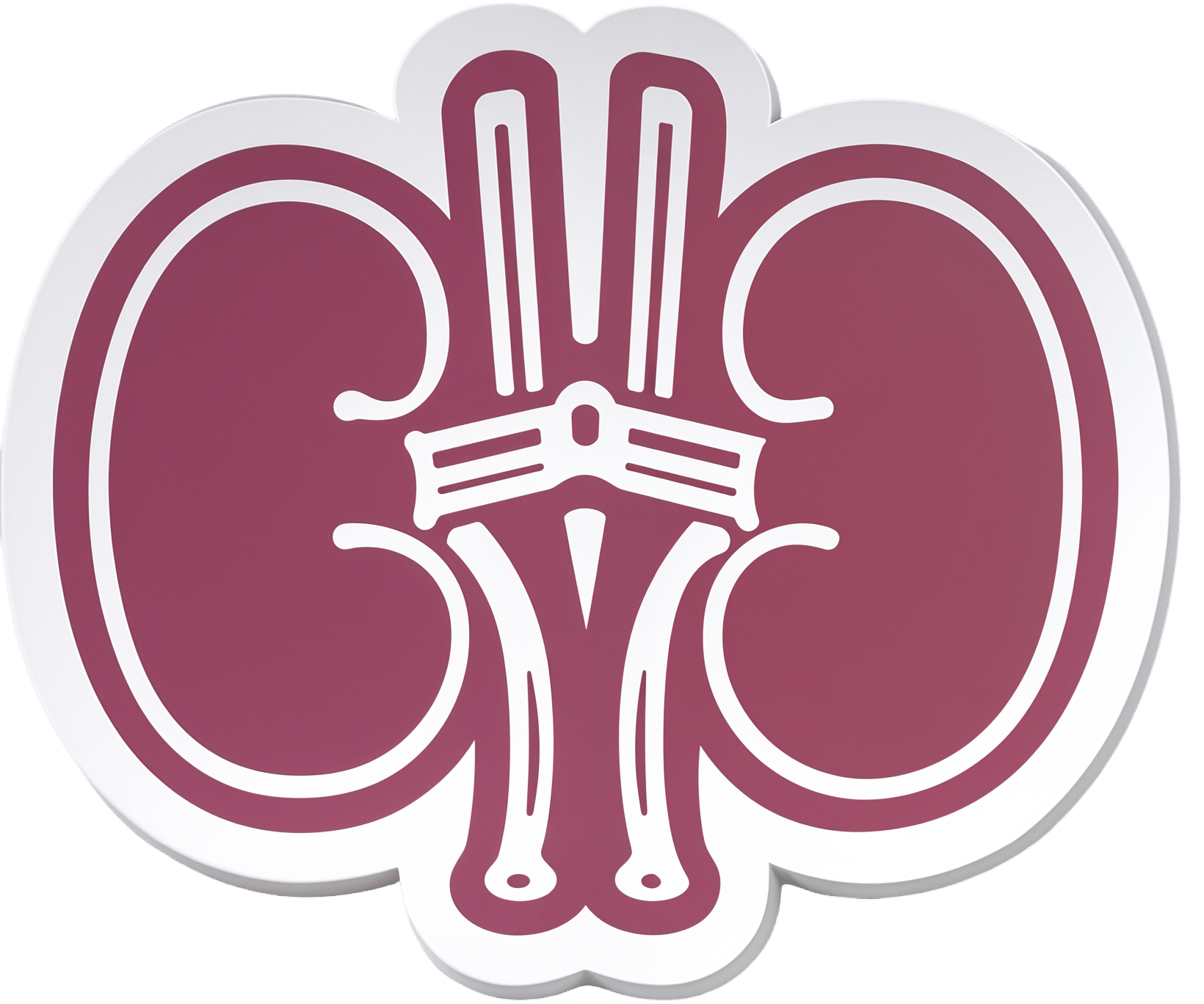
Less Common Oral Hygiene Options
10almonds is reader-supported. We may, at no cost to you, receive a portion of sales if you purchase a product through a link in this article.
Less Common Alternatives For Oral Hygiene!
You almost certainly brush your teeth. You might use mouthwash. A lot of people floss for three weeks at a time, often in January.
There are a lot of options for oral hygiene; variations of the above, and many alternatives too. This is a big topic, so rather than try to squeeze it all in one, this will be a several-part series.
- The first part was: Toothpastes & Mouthwashes: Which Help And Which Harm?
- The second part was: Flossing, Better (And Easier!)
- The third (and for now at least, final) part will look at some less common alternatives.
Tooth soap
The idea here is simplicity, and brushing with as few ingredients as possible. Soap cleans your teeth the same way it cleans your (sometimes compositionally quite similar—enamel and all) dishes, without damaging them.
We’d love to link to some science here, but alas, it appears to have not yet been done—at least, we couldn’t find any!
You can make your own tooth soap if you are feeling confident, or you might prefer to buy one ready-made (here’s an example product on Amazon, with various flavor options)
Oil pulling
We are getting gradually more scientific now; there is science for this one… But the (scientific) reviews are mixed:
Wooley et al., 2020, conducted a review of extant studies, and concluded:
❝The limited evidence suggests that oil pulling with coconut oil may have a beneficial effect on improving oral health and dental hygiene❞
The “Science-Based Medicine” project was less positive in its assessment, and declared that all and any studies that found oil pulling to be effective were a matter of researcher/publication bias. We would note that SBM is a private project and is not without its own biases, but for balance, here is what they had to offer:
A more rounded view seems to be that it is a good method for cleaning your teeth if you don’t have better options available (whereby, “better options” is “almost any other method”).
One final consideration, which the above seemed not to consider, is:
If you have sensitive teeth/gums, oil-pulling is the gentlest way of cleaning them, and getting them back into sufficient order that you can comfortably use other methods.
Want to try it? You can use any food-grade oil (coconut oil or olive oil are common choices).
Chewing stick
Not just any stick—a twig of the Salvadora persica tree. This time, there’s lots of science for it, and it’s uncontroversially effective:
❝A number of scientific studies have demonstrated that the miswak (Salvadora persica) possesses antibacterial, anti-fungal, anti-viral, anti-cariogenic, and anti-plaque properties.
Several studies have also claimed that miswak has anti-oxidant, analgesic, and anti-inflammatory effects. The use of a miswak has an immediate effect on the composition of saliva.
Several clinical studies have confirmed that the mechanical and chemical cleansing efficacy of miswak chewing sticks are equal and at times greater than that of the toothbrush❞
Read in full: A review of the therapeutic effects of using miswak (Salvadora Persica) on oral health
And about the efficacy vs using a toothbrush, here’s an example:
Comparative effect of chewing sticks and toothbrushing on plaque removal and gingival health
Want to try the miswak stick? Here’s an example product on Amazon.
Enjoy!
Don’t Forget…
Did you arrive here from our newsletter? Don’t forget to return to the email to continue learning!
Recommended
Learn to Age Gracefully
Join the 98k+ American women taking control of their health & aging with our 100% free (and fun!) daily emails:
-
Keeping Your Kidneys Healthy (Especially After 60)
10almonds is reader-supported. We may, at no cost to you, receive a portion of sales if you purchase a product through a link in this article.
Keeping your kidneys happy: it’s more than just hydration!
Your kidneys are very busy organs. They filter waste products, balance hydration, pH, salt, and potassium. They also make some of our hormones, and are responsible for regulating red blood cell production too. They also handle vitamin D in a way our bodies would not work without, making them essential for calcium absorption and the health of our bones, and even muscular function.
So, how to keep them in good working order?
Yes, hydrate
This is obvious and may go without saying, but we try to not leave important things without saying. So yes, get plenty of water, spread out over the day (you can only usefully absorb so much at once!). If you feel thirsty, you’re probably already dehydrated, so have a little (hydrating!) drink.
Don’t smoke
It’s bad for everything, including your kidneys.
Look after your blood
Not just “try to keep it inside your body”, but also:
- Keep your blood sugar levels healthy (hyperglycemia can cause kidney damage)
- Keep your blood pressure healthy (hypertension can cause kidney damage)
Basically, your kidneys’ primary job of filtering blood will go much more smoothly if that blood is less problematic on the way in.
Watch your over-the-counter pill intake
A lot of PRN OTC NSAIDs (PRN = pro re nata, i.e. you take them as and when symptoms arise) (NSAIDs = Non-Steroidal Anti-Inflammatory Drugs, such as ibuprofen for example) can cause kidney damage if taken regularly.
Many people take ibuprofen (for example) constantly for chronic pain, especially the kind cause by chronic inflammation, including many autoimmune diseases.
It is recommended to not take them for more than 10 days, nor more than 8 per day. Taking more than that, or taking them for longer, could damage your kidneys temporarily or permanently.
Read more: National Kidney Foundation: Advice About Pain Medicines
See also: Which Drugs Are Harmful To Your Kidneys?
Get a regular kidney function checkup if you’re in a high risk group
Who’s in a high risk group?
- If you’re over 60
- If you have diabetes
- If you have cardiovascular disease
- If you have high blood pressure
- If you believe, or know, you have existing kidney damage
The tests are very noninvasive, and will be a urine and/or blood test.
For more information, see:
Kidney Testing: Everything You Need to Know
Take care!
Share This Post
-
Millet vs Rye – Which is Healthier?
10almonds is reader-supported. We may, at no cost to you, receive a portion of sales if you purchase a product through a link in this article.
Our Verdict
When comparing millet to rye, we picked the rye.
Why?
In terms of macros, they’re about equal on protein, and rye has more carbs and fiber, the ratio of which give it the lower glycemic index, so we say rye wins this category.
In the category of vitamins, millet has more of vitamins B1, B2, B6, and B9, while rye has more of vitamins A, B5, E, and K. Notionally, that’s a 4:4 tie, though rye’s margins of difference are an order of magnitude greater, so we say rye takes a marginal victory on this one.
When it comes to minerals, there’s nothing to debate here: millet has more copper, while rye has more calcium, manganese, phosphorus, potassium, selenium, and zinc. An easy win for rye on this one.
Adding up the sections gives the overall win to rye, but there is one other thing worth mentioning: millet is naturally gluten-free, but rye is not, so if you are avoiding gluten for any reason, you’ll want to pick the millet in this case.
See also: Gluten: What’s The Truth?
Aside from that, by all means enjoy either or both, in moderation! Diversity is good.
Want to learn more?
You might like to read:
Grains: Bread Of Life, Or Cereal Killer?
Enjoy!
Share This Post
-
What’s the difference between medical abortion and surgical abortion?
10almonds is reader-supported. We may, at no cost to you, receive a portion of sales if you purchase a product through a link in this article.
In Australia, around one in four people who are able to get pregnant will have a medical or surgical abortion in their lifetime.
Both options are safe, legal and effective. The choice between them usually comes down to personal preference and availability.
So, what’s the difference?
PeopleImages.com – Yuri A/Shutterstock What is a medical abortion?
A medical abortion involves taking two types of tablets, sold together in Australia as MS2Step.
The first tablet, mifepristone, stops the hormone progesterone, which is needed for pregnancy. This causes the lining of the uterus to break down and stops the embryo from growing.
After taking mifepristone, you wait 36–48 hours before taking the second tablet, misoprostol. Misoprostol makes the cervix (the opening of the uterus) softer and starts contractions to expel the pregnancy.
It’s normal to have strong pain and heavy bleeding with clots after taking misoprostol. Pain relief including ibuprofen and paracetamol can help.
After two to six hours, the bleeding and pain usually become like a normal period, although this may last between two to six weeks.
Haemorrhage after a medical abortion is rare (occurring in fewer than 1% of abortions). But you should seek help if bleeding remains heavy (if you soak two pads per hour for two consecutive hours) or if you have have signs of infection (such as a fever, increasing abdominal pain or smelly vaginal discharge).
Do I have to go to hospital?
It is legal to have a medical abortion outside of a hospital up to nine weeks of pregnancy.
Depending on state or territory law, the medication can be prescribed by a qualified health-care provider such as a GP, nurse practitioner or endorsed midwife. These clinicians often work in GP surgeries or sexual and reproductive health clinics and they may use telehealth.
Medical abortions also occur after nine weeks of pregnancy, but these are done in hospitals and overseen by doctors alongside nurses or midwives.
Medical abortions after 20 weeks are done by taking medications to start early labour in a maternity unit. Often, medications are first given to stop the foetal heartbeat so it is not born alive. Then, other medications are given to manage pain.
These types of abortions are very rare. They may be used when an obstacle has prevented someone accessing an abortion earlier, continuing with the pregnancy is dangerous for the pregnant person’s health or if there is a serious problem with the foetus.
Medical abortions in Australia involve taking two tablets, usually around two days apart. PeopleImages.com – Yuri A/Shutterstock What is a surgical abortion?
Surgical abortions are performed in an operating unit, usually with sedation, so you will not remember the procedure. Surgical abortions are sometimes preferred over medical abortions because they are quicker. But the decision should be between you and your health-care provider.
In the first 12–14 weeks of pregnancy, a surgical abortion takes less than 15 minutes and patients are usually discharged a few hours after the procedure.
Medications may be given before surgery to soften and open the cervix and to ease pain. During the procedure, the cervix is gently stretched open and the contents of the uterus are removed with a small tube. This procedure is carried out by trained doctors with the assistance of nurses.
Surgical abortions after 12–14 weeks are more complex and are performed by specially trained doctors. Similar to medical abortions, medications may be given first to stop the foetal heartbeat.
It is normal to experience some cramping and bleeding after a surgical abortion, which can last about two weeks. However, like medical abortion, you should seek help for heavy bleeding or signs of infection.
Do I need an ultrasound?
It used to be common before an abortion to have an ultrasound scan to check how far along the pregnancy was and to make sure it was not ectopic (outside the uterus).
However, this is no longer recommended in the early stages of pregnancy (up to 14 weeks) if it delays access to abortion. If the date of the last menstrual period is known and there are no other concerning symptoms, an ultrasound scan may not be necessary.
This means people can access medical abortion much sooner, even from the first day of a missed period, without waiting for the embryo to be big enough to be seen on an ultrasound scan. This is called “very early medical abortion”.
Before and after care
Before having an abortion, a health-care provider will explain common side effects and when to seek urgent medical attention. For people who want it, many types of contraception can be started the day of abortion.
Your health-care provider will help you understand your options, including whether you want to start contraception. PowerUp/Shutterstock Even though the success rate of medical abortion is very high (over 95%) it is routine to make sure the person is no longer pregnant.
This is usually done two to three weeks after taking the first tablet mifepristone, either by a low-sensitivity urine pregnancy test (which you can do at home) or a blood test.
In the rare case a medical abortion has not worked, a surgical abortion can be done.
Sometimes after a medical or surgical abortion, tissue is left behind in the uterus. If this happens you may need another dose of misoprostol (the second tablet) or a surgical procedure to remove the tissue.
Some people may also seek support-based counselling or peer support to help them work through the emotions that might accompany having an abortion.
Understanding the differences and similarities between medical and surgical abortions can help individuals make informed decisions about their reproductive health.
It’s important to speak with an unbiased health-care provider to discuss the best option for your circumstances and to ensure you receive the necessary follow-up care and support.
Lydia Mainey, Senior Nursing Lecturer, CQUniversity Australia
This article is republished from The Conversation under a Creative Commons license. Read the original article.
Share This Post
Related Posts
-
Are you over 75? Here’s what you need to know about vitamin D
10almonds is reader-supported. We may, at no cost to you, receive a portion of sales if you purchase a product through a link in this article.
Vitamin D is essential for bone health, immune function and overall wellbeing. And it becomes even more crucial as we age.
New guidelines from the international Endocrine Society recommend people aged 75 and over should consider taking vitamin D supplements.
But why is vitamin D so important for older adults? And how much should they take?
OPPO Find X5 Pro/Unsplash Young people get most vitamin D from the sun
In Australia, it is possible for most people under 75 to get enough vitamin D from the sun throughout the year. For those who live in the top half of Australia – and for all of us during summer – we only need to have skin exposed to the sun for a few minutes on most days.
The body can only produce a certain amount of vitamin D at a time. So staying in the sun any longer than needed is not going to help increase your vitamin D levels, while it will increase your risk of skin cancer.
But it’s difficult for people aged over 75 to get enough vitamin D from a few minutes of sunshine, so the Endocrine Society recommends people get 800 IU (international units) of vitamin D a day from food or supplements.
Why you need more as you age
This is higher than the recommendation for younger adults, reflecting the increased needs and reduced ability of older bodies to produce and absorb vitamin D.
Overall, older adults also tend to have less exposure to sunlight, which is the primary source of natural vitamin D production. Older adults may spend more time indoors and wear more clothing when outdoors.
As we age, our skin also becomes less efficient at synthesising vitamin D from sunlight.
The kidneys and the liver, which help convert vitamin D into its active form, also lose some of their efficiency with age. This makes it harder for the body to maintain adequate levels of the vitamin.
All of this combined means older adults need more vitamin D.
Deficiency is common in older adults
Despite their higher needs for vitamin D, people over 75 may not get enough of it.
Studies have shown one in five older adults in Australia have vitamin D deficiency.
In higher-latitude parts of the world, such as the United Kingdom, almost half don’t reach sufficient levels.
This increased risk of deficiency is partly due to lifestyle factors, such as spending less time outdoors and insufficient dietary intakes of vitamin D.
It’s difficult to get enough vitamin D from food alone. Oily fish, eggs and some mushrooms are good sources of vitamin D, but few other foods contain much of the vitamin. While foods can be fortified with the vitamin D (margarine, some milk and cereals), these may not be readily available or be consumed in sufficient amounts to make a difference.
In some countries such as the United States, most of the dietary vitamin D comes from fortified products. However, in Australia, dietary intakes of vitamin D are typically very low because only a few foods are fortified with it.
Why vitamin D is so important as we age
Vitamin D helps the body absorb calcium, which is essential for maintaining bone density and strength. As we age, our bones become more fragile, increasing the risk of fractures and conditions like osteoporosis.
Keeping bones healthy is crucial. Studies have shown older people hospitalised with hip fractures are 3.5 times more likely to die in the next 12 months compared to people who aren’t injured.
People over 75 often have less exposure to sunlight. Aila Images/Shutterstock Vitamin D may also help lower the risk of respiratory infections, which can be more serious in this age group.
There is also emerging evidence for other potential benefits, including better brain health. However, this requires more research.
According to the society’s systematic review, which summarises evidence from randomised controlled trials of vitamin D supplementation in humans, there is moderate evidence to suggest vitamin D supplementation can lower the risk of premature death.
The society estimates supplements can prevent six deaths per 1,000 people. When considering the uncertainty in the available evidence, the actual number could range from as many as 11 fewer deaths to no benefit at all.
Should we get our vitamin D levels tested?
The Endocrine Society’s guidelines suggest routine blood tests to measure vitamin D levels are not necessary for most healthy people over 75.
There is no clear evidence that regular testing provides significant benefits, unless the person has a specific medical condition that affects vitamin D metabolism, such as kidney disease or certain bone disorders.
Routine testing can also be expensive and inconvenient.
In most cases, the recommended approach to over-75s is to consider a daily supplement, without the need for testing.
You can also try to boost your vitamin D by adding fortified foods to your diet, which might lower the dose you need from supplementation.
Even if you’re getting a few minutes of sunlight a day, a daily vitamin D is still recommended.
Elina Hypponen, Professor of Nutritional and Genetic Epidemiology, University of South Australia and Joshua Sutherland, PhD Candidate – Nutrition and Genetic Epidemiology, University of South Australia
This article is republished from The Conversation under a Creative Commons license. Read the original article.
Don’t Forget…
Did you arrive here from our newsletter? Don’t forget to return to the email to continue learning!
Learn to Age Gracefully
Join the 98k+ American women taking control of their health & aging with our 100% free (and fun!) daily emails:
-
10 Lessons For A Healthy Mind & Body
10almonds is reader-supported. We may, at no cost to you, receive a portion of sales if you purchase a product through a link in this article.
Sadia Badiei, food scientist of “Pick Up Limes” culinary fame, has advice in and out of the kitchen:
Pick up a zest for life
Here’s what she picked up, and we all can too:
- “I can’t do it… yet”: it’s never too late to adopt a growth mindset by adding “yet” to your self-doubt, focusing on progress and the possibility of improvement.
- The spotlight effect: people are generally too absorbed in their own lives to focus on you, so don’t worry too much about others’ perceptions.
- Nutrition by addition: focus on adding healthier foods to your diet rather than eliminating the less healthy ones to avoid restrictive mindsets. You can still eliminate the less healthy ones if you want to! It just shouldn’t be the primary focus. Focusing on a conceptually negative thing is rarely helpful.
- It’s ok to change: embrace change as a sign of growth and evolution, rather than seeing it as a failure or waste of time.
- The way you do one thing is the way you do everything: be mindful of how you approach small tasks, regular tasks, boring tasks, unwanted tasks—you can either create a habit of enthusiasm or a habit of suffering (it’s entirely your choice which)
- Setting goals for success: set goals based on actions you can control (inputs) rather than outcomes that are uncertain. Less “lose 10 lbs”, and more “eat fiber before starch”, for example.
- You probably can’t have it all at once: you can achieve all your dreams, but often not simultaneously; goals and desires unfold in stages over time.
- The five-year rule: before adopting a new lifestyle or habit, ask yourself if you can realistically sustain it for five years to ensure it’s not just a short-term fix. If you struggle with this prognostic, look backwards first instead. Which healthy habits have you maintained for decades, and which were you never able to make stick?
- Are you afraid or excited?: reframe fear as excitement, as both emotions share similar physical sensations and signify that you care about the outcome.
- The voice you hear most: speak kindly to yourself in self-talk to create a softer, more compassionate tone. Your subconscious is always listening, so reinforce healthy rather than unhealthy thought patterns.
For more on each of these, enjoy:
Click Here If The Embedded Video Doesn’t Load Automatically!
Want to learn more?
You might also like to read:
80-Year-Olds Share Their Biggest Regrets
Take care!
Don’t Forget…
Did you arrive here from our newsletter? Don’t forget to return to the email to continue learning!
Learn to Age Gracefully
Join the 98k+ American women taking control of their health & aging with our 100% free (and fun!) daily emails:
-
Young Forever – by Dr. Mark Hyman
10almonds is reader-supported. We may, at no cost to you, receive a portion of sales if you purchase a product through a link in this article.
A lot of work on the topic of aging looks at dealing with symptoms of aging, rather than the causes. And, that’s worthy too! Those symptoms often do need addressing. But this book is about treating the causes.
Dr. Hyman outlines:
- How and why we age
- The root causes of aging
- The ten hallmarks of aging
From there, we go on to learn about the foundations of longevity, and balancing our seven core biological systems:
- Nutrition, digestion, and the microbiome
- Immune and inflammatory system
- Cellular energy
- Biotransformation and elimination/detoxification*
- Hormones, neurotransmitters, and other signalling molecules
- Circulation and lymphatic flow
- Structural health, from muscle and bones to cells and tissues
*This isn’t about celery juice fasts and the like; this talking about the work your kidneys, liver, and other organs do
The book goes on to detail how, precisely, with practical actionable advices, to optimize and take care of each of those systems.
All in all: if you want a great foundational understanding of aging and how to slow it to increase your healthy lifespan, this is a very respectable option.
Click here to get your copy of “Young Forever” from Amazon today!
Don’t Forget…
Did you arrive here from our newsletter? Don’t forget to return to the email to continue learning!
Learn to Age Gracefully
Join the 98k+ American women taking control of their health & aging with our 100% free (and fun!) daily emails:












